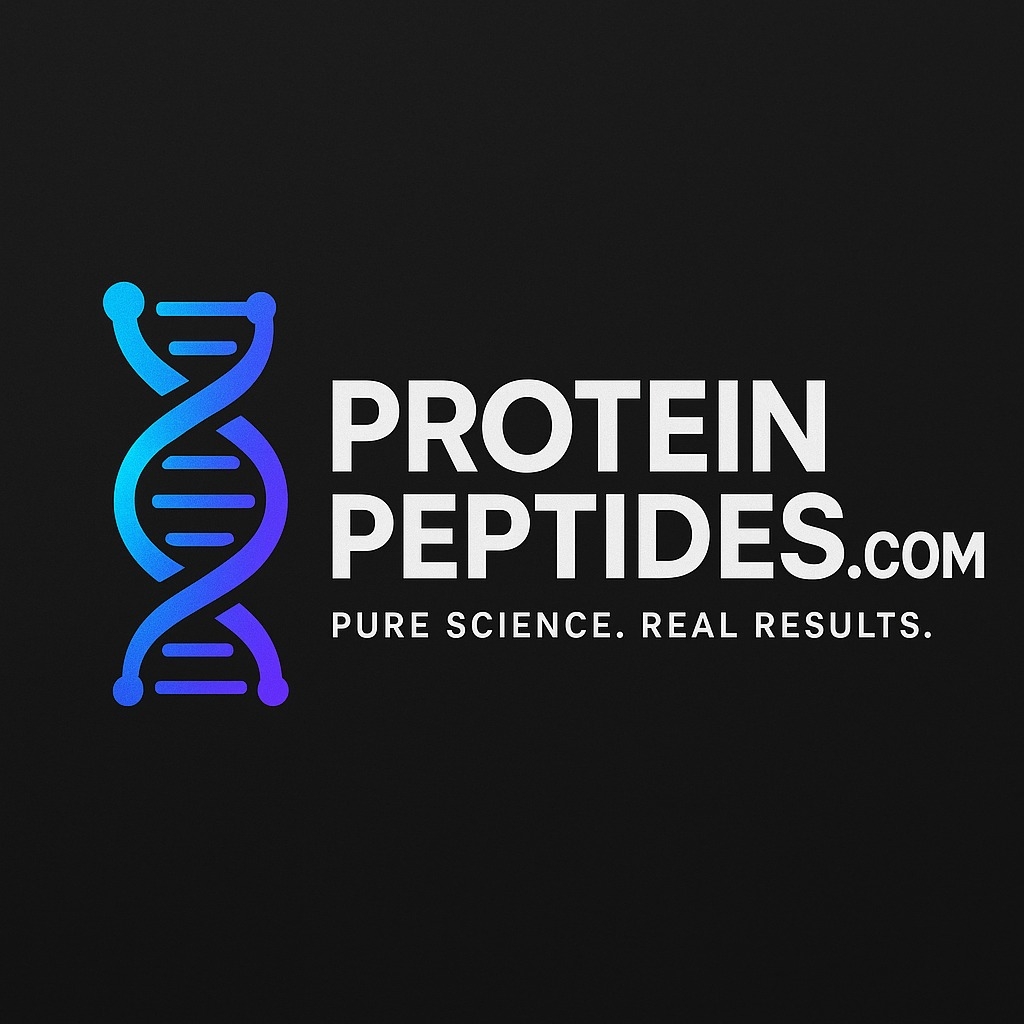Peptides: Reducing Hunger and Promoting Satiety
Peptides are rapidly gaining attention for their ability to regulate appetite, reduce hunger, and promote feelings of fullness (satiety). These short chains of amino acids act as signaling molecules, influencing a range of physiological processes, including those related to hunger and energy balance. In an era where obesity and related metabolic disorders are on the rise, peptides have emerged as powerful tools to help individuals manage weight and improve overall health. This article explores how peptides work to reduce hunger, enhance satiety, and support long-term weight management.
Understanding Hunger and Satiety
Hunger and satiety are complex physiological processes controlled by the interaction of hormones, neurotransmitters, and neural pathways. Key players include:
- Hunger Hormones: Ghrelin, produced by the stomach, signals the brain to stimulate appetite.
- Satiety Hormones: Hormones like leptin, peptide YY (PYY), and glucagon-like peptide-1 (GLP-1) reduce hunger and increase feelings of fullness.
- Neural Centers: The hypothalamus in the brain plays a central role in integrating signals from the gut, fat tissue, and other organs to regulate hunger and satiety.
Peptides target these mechanisms, offering a promising approach to appetite regulation.
How Peptides Reduce Hunger and Promote Satiety
Peptides influence hunger and satiety through various pathways:
1. Modulating Hunger Hormones
Certain peptides can suppress ghrelin production, reducing hunger signals to the brain. By decreasing the activity of hunger hormones, peptides help control food intake.
2. Enhancing Satiety Hormones
Peptides like GLP-1 and PYY mimic natural satiety hormones, signaling the brain that the body is full. These peptides slow gastric emptying, prolonging the sensation of fullness after meals.
3. Targeting the Hypothalamus
Peptides interact with receptors in the hypothalamus, regulating neural pathways that control appetite. This direct action on the brain enhances their efficacy in appetite suppression.
4. Regulating Blood Sugar Levels
By improving glucose metabolism, peptides reduce fluctuations in blood sugar levels that often trigger hunger. This mechanism supports more consistent energy levels and reduces cravings.
Key Peptides for Appetite Regulation
1. GLP-1 (Glucagon-Like Peptide-1)
GLP-1 is an incretin hormone that plays a significant role in regulating appetite and blood sugar levels.
- Mechanism of Action: GLP-1 slows gastric emptying, enhances insulin secretion, and suppresses glucagon release. It also acts on the brain to promote satiety.
- Benefits: GLP-1 receptor agonists, such as semaglutide and liraglutide, have been widely used in weight management and type 2 diabetes treatment, showing significant reductions in body weight and appetite.
2. Peptide YY (PYY)
PYY is a gut-derived peptide released after eating, signaling the brain to reduce food intake.
- Mechanism of Action: PYY binds to receptors in the hypothalamus, inhibiting hunger signals and enhancing satiety.
- Benefits: Studies show that higher PYY levels correlate with reduced calorie intake and improved weight control.
3. Amylin
Amylin is a peptide hormone co-secreted with insulin by the pancreas, playing a role in glucose regulation and appetite control.
- Mechanism of Action: Amylin slows gastric emptying and reduces post-meal glucose spikes, promoting a feeling of fullness.
- Benefits: Synthetic amylin analogs, such as pramlintide, are used to manage diabetes and support weight loss.
4. CCK (Cholecystokinin)
CCK is a peptide hormone released by the small intestine in response to food consumption.
- Mechanism of Action: CCK stimulates the release of digestive enzymes and bile while signaling the brain to reduce appetite.
- Benefits: CCK is effective in curbing meal size and promoting satiety.
5. MOTS-c
MOTS-c is a mitochondrial-derived peptide that regulates energy metabolism and supports weight loss.
- Mechanism of Action: By improving metabolic flexibility and glucose utilization, MOTS-c indirectly reduces hunger and enhances satiety.
- Benefits: This peptide helps stabilize blood sugar levels, reducing cravings and promoting consistent energy.
Benefits of Peptides in Appetite Control
1. Effective Weight Management
Peptides reduce hunger and promote fullness, making it easier to adhere to a calorie-controlled diet. This leads to sustainable weight loss and improved metabolic health.
2. Better Blood Sugar Control
By regulating glucose metabolism, peptides help prevent energy crashes and reduce sugar cravings. This is particularly beneficial for individuals with diabetes or prediabetes.
3. Improved Meal Satisfaction
Peptides enhance the satisfaction derived from meals, reducing the need for frequent snacking or overeating.
4. Targeted Mechanisms
Unlike generic appetite suppressants, peptides work through specific biological pathways, minimizing side effects and offering a tailored approach to appetite regulation.
5. Long-Term Solutions
Many peptides not only address short-term hunger but also help reset the body’s natural appetite regulation mechanisms, supporting long-term health benefits.
Scientific Evidence Supporting Peptides
GLP-1 in Weight Management
Clinical trials have shown that GLP-1 receptor agonists lead to significant weight loss. For instance, semaglutide has demonstrated an average body weight reduction of 10-15% in patients with obesity.
PYY and Calorie Intake
Studies indicate that increased PYY levels after meals are associated with reduced calorie consumption and improved satiety, highlighting its role in appetite regulation.
Amylin and Satiety
Research on pramlintide, a synthetic amylin analog, shows improved post-meal glucose control and reduced food intake, supporting its effectiveness in managing appetite.
How to Incorporate Peptides for Appetite Control
1. Medical Consultation
Before starting peptide therapy, consult with a healthcare provider to determine the most suitable options based on your health goals and needs.
2. Delivery Methods
Peptides are available in injectable, oral, or nasal spray forms. Injectable peptides are often the most effective for systemic effects, while oral and nasal options offer convenience.
3. Combining with Lifestyle Changes
For best results, peptide therapy should be combined with a balanced diet and regular exercise. This holistic approach enhances the benefits of peptides and supports overall health.
4. Monitoring and Adjustment
Regular monitoring ensures that the peptide regimen is effective and side effects are minimized. Dosages may need to be adjusted over time for optimal results.
Safety and Side Effects
Peptides are generally well-tolerated, but some individuals may experience mild side effects, such as nausea, digestive discomfort, or injection site reactions. It’s essential to use peptides under medical supervision and source them from reputable suppliers.
Future Directions in Peptide Research
Ongoing research aims to develop new peptides with enhanced efficacy and fewer side effects. Advances in delivery systems, such as long-acting formulations, are also expected to improve convenience and accessibility. Personalized peptide therapies tailored to individual genetic profiles could further revolutionize appetite control and weight management.
Final Reflections
Peptides are transforming the approach to appetite control by targeting specific mechanisms that regulate hunger and satiety. From reducing calorie intake to promoting long-term weight management, peptides offer a powerful and scientifically-backed solution to combat obesity and improve metabolic health. As research progresses, their role in promoting sustainable health and wellness will continue to expand.
- Drucker DJ. Mechanisms of action and therapeutic application of glucagon-like peptide-1. Cell Metab. 2018;27(4):740-756. doi:10.1016/j.cmet.2018.03.001
- Batterham RL, et al. Inhibition of food intake in obese subjects by peptide YY3–36. N Engl J Med. 2003;349(10):941-948. doi:10.1056/NEJMoa030204
- Young AA, et al. Pramlintide, an amylin analogue, reduces body weight in obese subjects. Obes Res. 2004;12(4):632-640. doi:10.1038/oby.2004.73
- Woods SC, et al. Cholecystokinin and satiety: why does it fail in obesity? Physiol Behav. 2004;82(1):101-106. doi:10.1016/j.physbeh.2004.04.022
- Lee C, et al. The mitochondrial-derived peptide MOTS-c promotes metabolic homeostasis and reduces obesity. Cell Metab. 2015;21(3):443-454. doi:10.1016/j.cmet.2015.02.009





